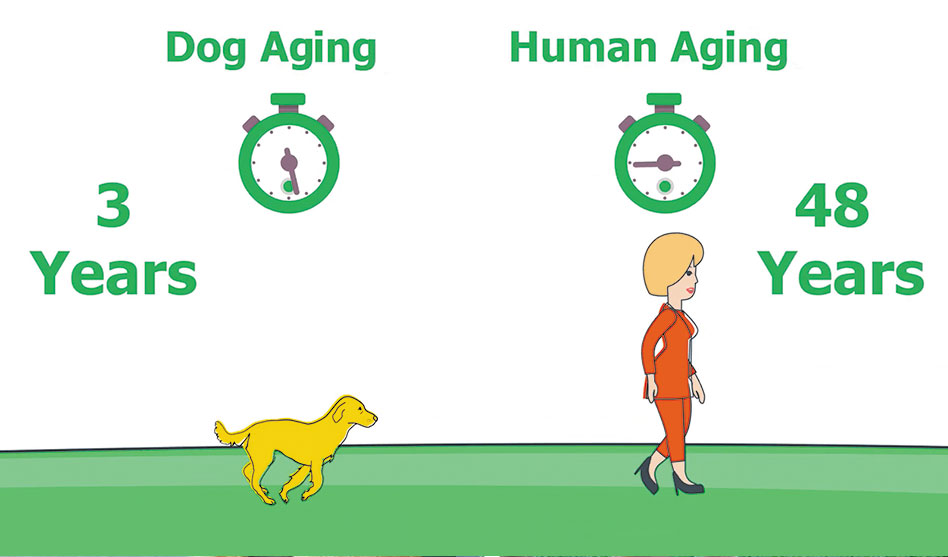DAVID TAFFET | Senior Staff Writer
taffet@dallasvoice.com
 We’ve always been told dogs age seven years for every one of our years. But new research shows your dog may be older than you think.
We’ve always been told dogs age seven years for every one of our years. But new research shows your dog may be older than you think.
According to a study from the University of California San Diego, a one-year-old dog is more like a 31-year-old human. Then aging in dogs begins to slow. At three years, a dog is more like a 48-year-old human; that’s eight-and-a-half years per year.
By age six, a dog is entering its senior years. Seven years equals 60 in dog years. But by age seven, a dog has only aged about two years.
A dog’s average life expectancy is 12 years, and at 12, a dog is equivalent to a 70-year-old human. So for those last five years, the aging process slows down to just over a year per actual year.
According veterinarian Chad Dodd, quoted in a press release by joint supplement YuMove, this information on how dogs age means “we should be checking a dog’s mobility sooner, even if there are no outward signs.”
Here are his tips to make sure your dog is ready for a brisk walk or a run in the dog park or if your dog has joint issues:
• Check their joints: Is Fido a bit creaky from sitting on your lap or under your office desk? If your dog is limping, licking at joints, hesitant to walk on hard surfaces and not jumping onto your bed as usual, they might have more challenging joint issues. It’s key to keep joints healthy for your dog’s mobility throughout their life, and now biology is showing that there might be joint issues at a younger age.
• Build up their stamina: Your dog just might be a little out of practice. Start with two 15-minute walks a day and see how they do.
• Start with a game of tag: Grab your dog’s favorite toy, toss it and then race your dog to retrieve it.
• Play hide and seek: Hide some kibble or favorite toys to get your dog moving outdoors or around the house to keep their activity levels up.
Even if there are no outward signs, given this new study, consider a joint supplement at 3 or 4 years-old vs. 7 or 8.

















Is there a link to the UCSD study?
Here it is: https://health.ucsd.edu/news/releases/Pages/2020-07-02-how-old-is-your-dog-in-human-years.aspx